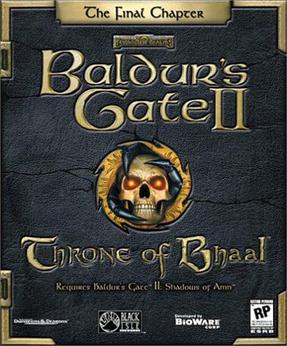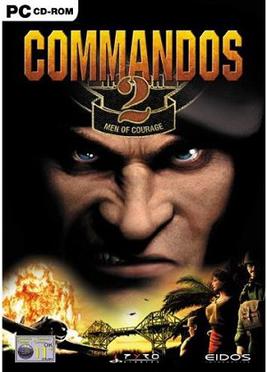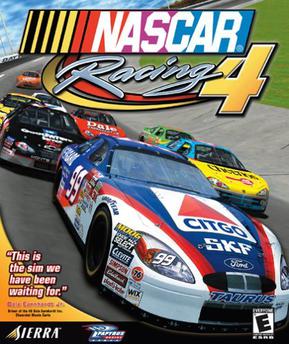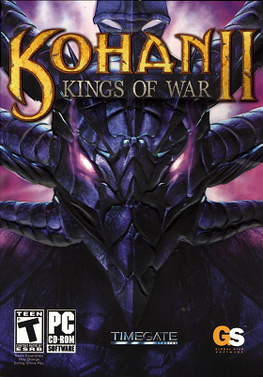Real-time strategy (RTS) is a subgenre of strategy video games that does not progress incrementally in turns, but allow all players to play simultaneously, in "real time." By contrast, in turn-based strategy (TBS) games, players take turns to play. The term "real-time strategy" was coined by Brett Sperry to market Dune II in the early 1990s.

Sid Meier's Civilization II is a turn-based strategy video game in the Civilization series, developed and published by MicroProse. It was released in 1996 for PCs, and later ported to the PlayStation by Activision.

Europa Universalis is a grand strategy video game developed by Paradox Development Studio and published in 2000 by Strategy First.

Sid Meier's Civilization III is the third installment of the Sid Meier's Civilization turn-based strategy video game series. It was released in 2001, and followed by Civilization IV. Unlike the original game, Civilization III was not designed by Sid Meier, but by Jeff Briggs, a game designer, and Soren Johnson, a game programmer.

Age of Wonders II: The Wizard's Throne is a turn-based strategy video game in a fantasy setting. The sequel to Age of Wonders, it was developed by Dutch video game developer Triumph Studios.

Medieval: Total War is a turn-based strategy and real-time tactics computer game developed by Creative Assembly and published by Activision. Set in the Middle Ages, it is the second game in the Total War series, following on from the 2000 title Shogun: Total War. Originally announced in August 2001, the game was released in North America on 20 August 2002 and in Europe on 30 August for Microsoft Windows.

4X is a subgenre of strategy-based computer and board games, and includes both turn-based and real-time strategy titles. The gameplay generally involves building an empire. Emphasis is placed upon economic and technological development, as well as a range of military and non-military routes to supremacy.

Baldur's Gate II: Throne of Bhaal is a 2001 expansion pack for the role-playing video game Baldur's Gate II: Shadows of Amn. It adds a multi-level dungeon called Watcher's Keep to the game and completes the main plot. There are several new weapons, a higher level cap, a further refined Infinity graphics engine, and new class-related features and magical skills. The novelization of the game was written by Drew Karpyshyn and released in September 2001.
TimeGate Studios was an American video game developer based in Sugar Land, Texas. The company, which was founded in 1998, released eight titles before closing in 2013.

Caesar III is a city-building game released on September 30, 1998, for Microsoft Windows and Mac OS, developed by Impressions Games and published by Sierra On-Line. It is the third installment of the Caesar series of games and is part of Sierra's City Building series. Players assume the role of a provincial governor to build thriving cities across the Roman Empire, in which they must ensure their citizens have their needs met, and deal with various disasters, angry gods and hostile enemies. The developers of Caesar III designed the game in response to critiques of its predecessor, introducing branching missions, a merged map for city-building and combat, and a "walker" mechanic for citizens of the city to affect their surroundings. Caesar III was released to positive critical reception, with praise directed at the game's visual presentation and complex design, and criticism levelled at its military features.

Stronghold is a 2001 real-time strategy video game developed by Firefly Studios and originally published by Gathering of Developers for Microsoft Windows and Mac OS X. It is the first instalment of the Stronghold series. The game focuses primarily on conquest and expansion through military pursuits but also has prominent economic and infrastructure development elements. There is both an economic and a military campaign to be played and both are discussed in the game manual. In the English version, the game takes place in Medieval Britain around the year 1066; however, since there is not always a time limit, scenarios can continue hundreds of years beyond that date.

Monopoly Tycoon is a construction and management simulation PC game published in 2001 by Infogrames Interactive and developed by Deep Red Games. The player operates a business that owns stores and apartments in a city derived from the Monopoly board game. Instead of using dice, the game relies more on the speed and innovativeness of the players. In the standard mode, the user plays against the AI opponents. In the multiplayer version, players go against other online players in order to gain victory.

Sacrifice is a real-time strategy video game published by Interplay Entertainment in 2000 for Microsoft Windows platform. Developed by Shiny Entertainment, the game features elements of action and other genres. Players control wizards who fight each other with spells and summoned creatures. The game was ported to Mac OS 9.2 in 2001.

Disciples: Sacred Lands is a turn-based strategy game published by Strategy First in 1999. Set in a fantasy world known as the Sacred Lands, it depicts a battle for dominance between the races of the world of Nevendaar. In 2001, an expanded version of the game was released titled Disciples: Sacred Lands - Gold Edition, which added 25 new scenarios.

Commandos 2: Men of Courage is a real-time tactics video game, developed by Pyro Studios, published by Eidos Interactive, and released on September 20, 2001. It is a sequel to Commandos: Behind Enemy Lines and the second installment of the Commandos series, and is the only strategy game of the series to be designed not only for Microsoft Windows, but also for PlayStation 2 and Xbox. The game sees players taking control of a squad of commandos, along with various allied units, as they sneak behind enemy lines to accomplish various missions in World War II, between 1941 and 1944, that will help them to thwart the war efforts of the Germans and the Japanese. The game features several improvements to the gameplay from its predecessor, including the ability to use enemy weapons and explore interior locations, the inclusion of three new commandos, a number of new skills for the original six members along with their other abilities, and new pieces of equipment to help overcome the enemy.

NASCAR Racing 4 is a racing simulator produced by Papyrus and released in February 2001.

Diablo is an action role-playing video game developed by Blizzard North and released by Blizzard Entertainment in January 1997, and is the first installment in the video game series of the same name.

Warcraft II: Tides of Darkness is a fantasy real-time strategy computer game developed by Blizzard Entertainment and released for MS-DOS and Microsoft Windows in 1995 and Mac OS in 1996 by Blizzard's parent, Davidson & Associates. A sequel to Warcraft: Orcs & Humans, the game was met with positive reviews and won most of the major PC gaming awards in 1996. In 1996, Blizzard released an expansion pack, Warcraft II: Beyond the Dark Portal, for DOS and Mac OS, and a compilation, Warcraft II: The Dark Saga, for the PlayStation and Sega Saturn. The Battle.net edition, released in 1999, included Warcraft II: Beyond the Dark Portal, provided Blizzard's online gaming service, and replaced the MS-DOS version with a Windows one.

Kohan II: Kings of War is a 2004 real-time strategy video game developed by TimeGate Studios exclusively for Windows. It is the sequel to Kohan: Immortal Sovereigns.

Who Wants to Be a Millionaire is a 1999 quiz/party video game originally developed by Jellyvision and published by Disney Interactive, based on the television franchise of the same name. The game was originally based on the American version of the show. It tasks the player with answering quiz questions in a limited time frame.



















